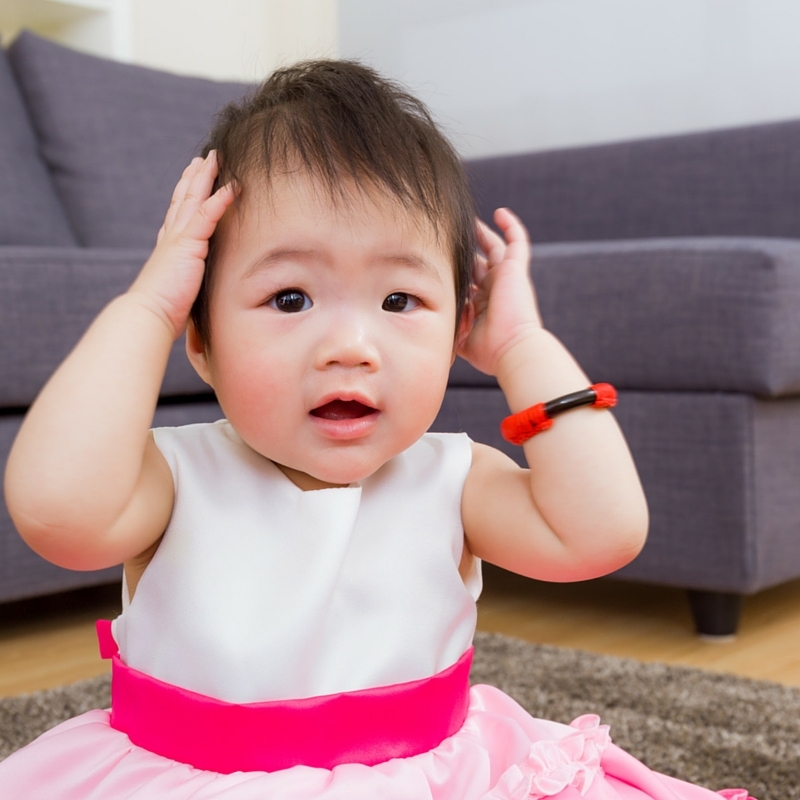|
 I looked at 3 sets of sore ears today, so I thought a post about ear infections would be helpful for you, and timely! I looked at 3 sets of sore ears today, so I thought a post about ear infections would be helpful for you, and timely!
Ear infections, aka “acute otitis media” (AOM) are one of the most common reasons for kids’ doctor visits. They can be really painful, and tend to make parents worried about hearing loss in the event that the ear drum ruptures.
What to Treat First
In fact, treating the pain is the first thing to do for the ear infection, as about 80% of them will resolve on their own in a couple of days with supportive measures – as I’ll mention below. Pain relief could include warm or cool compresses (whichever temperature your child prefers), specific homeopathic medicines with the help of your child’s homeopath or naturopath, or children’s Advil or children’s Tylenol according to package instructions for their age. Meanwhile, the risk of permanent hearing loss is very low, even if the ear drum ruptures. It will usually heal up within a matter of days to weeks. The big issue is to get to the root cause of the earache – the viral or bacterial infection – and solve underlying immune issues if your child is getting ear infections repeatedly.
What Causes Ear Infections?
A certain proportion of ear infections are caused by viruses (note, this means that antibiotics will have no effect on the infection) and the rest are caused by bacteria. Whether viral or bacterial, what happens is usually your child’s gotten sick with a cold or flu, which creates inflammation and extra mucus production in all of their mucus membranes, including the area at the back of their throat where their middle ear fluid usually drains out into via the Eustachian tubes. When your child gets sick, this tiny Eustachian tube closes itself shut due to congestion and swelling, so the fluids and any germs stuck in them get enclosed into a small space. This leads to the creation of pus, pressure and pain.
Will My Child’s Ear Drum Burst?
If the pressure gets too high behind the ear drum, it may rupture and leak pus and/or blood into the ear canal – you can usually see it once this has happened and you may notice that your child’s expressions of pain immediately reduce. If the ear drum has ruptured, STOP putting ANY drops or medicines into the ears.
Why is This a Big Decision?
Many ear infections are viral, which means antibiotics won’t help them. Meanwhile, antibiotics continue to be overprescribed and medical authorities recognize this misuse represents a serious risk of promoting antibiotic resistance, making antibiotics less effective in the event your child develops a severe or life-threatening infection at some point in the future. Antibiotics are clearly linked with thrush and yeast infections, and it will take about 18 months for the normal intestinal flora to recover from one round of antibiotics. Antibiotics in childhood have also been linked with risk of developing serious conditions such as Crohn’s disease, IBS (irritable bowel syndrome), and C. difficile diarrhea.
To help you decide what treatment decisions are on the table when your child has an earache, I’ve summarized in this table what the American Academy of Pediatrics recommends:
Age Severity Side Treatment Notes
6-23 months SEVERE: One or both ears Antibiotics
Moderate to severe
ear pain >48 hours;
Fever >39C (102.2F);
NON-SEVERE: Both ears Antibiotics
Mild pain <48 hrs
Temp <39C
NON-SEVERE: One ear Watch and wait If worsens or fails
Non-severe to improve within
<48 hrs 72 hrs of onset,
Temp <39C antibiotics are
indicated
2 years+ NON-SEVERE: One or both ears Watch and wait If worsens or fails
Non-severe to improve within
<48 hrs 72 hrs of onset,
Temp <39C antibiotics are
indicated.
In all cases, it’s helpful to have your child’s doctor take a look at their ears. Even if they’re tugging at their ears and acting irritable, it may not yet be a middle ear infection, which means there’s still time to avert full crisis with supportive treatments! Also, discharge from the ear could be coming from the external ear, as in swimmer’s ear.
Supportive Measures at Home:
Here are some natural ways to comfort your child through an earache and boost his or her immune system to combat the root cause – the infection (again, usually a virus) itself. Most kids would do well to have dairy products (milk, yogurt, cheese, ice cream) and sugar eliminated from their diet while fighting a cold or ear infection. Keep in mind whether or not your child needs antibiotics, he or she needs lots of extra rest, fluids, broths, some vitamin C, probiotics, and hugs J
1. Castor Oil Massage
Lymphatic drainage: gently massage castor oil in superficial (just moving the skin) small circular motions from just below the ear down the neck to the collar bones and shoulders.
Tummy Rubs: Massage your child’s tummy in a clockwise motion, put old PJ’s on her and put her to bed. The vast bulk (75%) of our immune tissue resides in the abdomen, so this treatment is a soothing general immune booster and promotes more restful sleep.
2. Magic Socks
Give your child a warm bath and/or set her up in a warm room to make sure she doesn’t get chilled when performing this treatment.
Soak a pair of clean cotton socks with cold water and wring them out thoroughly.
Place the cold wet socks on your child’s feet. (I know, this sounds like the WORST thing ever but TRUST me, it will be OK and will help decongest your baby overnight!)
Right away, cover her feet and wet socks with thick wool socks (or thick cotton socks if you don’t have wool).
Put her to bed with as many cozy blankets as she needs. You’ll find that the cotton socks will be dry in the morning, because the body’s response is to increase circulation and heat to the feet, while reducing congestion in the head and upper body.
3. Soothing Teas
Kids over 1 can safely sip on warm teas made from these herbs. Ask your naturopathic doctor for help with herbs for kids under 1.
Elderberry (*my #1 favourite cold + flu herbal tea for kids – it tastes nice and makes them feel better J)
Echinacea (doesn’t taste great, so mix it with something else they like)
Peppermint
Chamomile
Passion flower
Lavender
Ginger
Cinnamon
 Submitted by Submitted by
Dr. Elizabeth Cherevaty ND, RAc, Doula
|